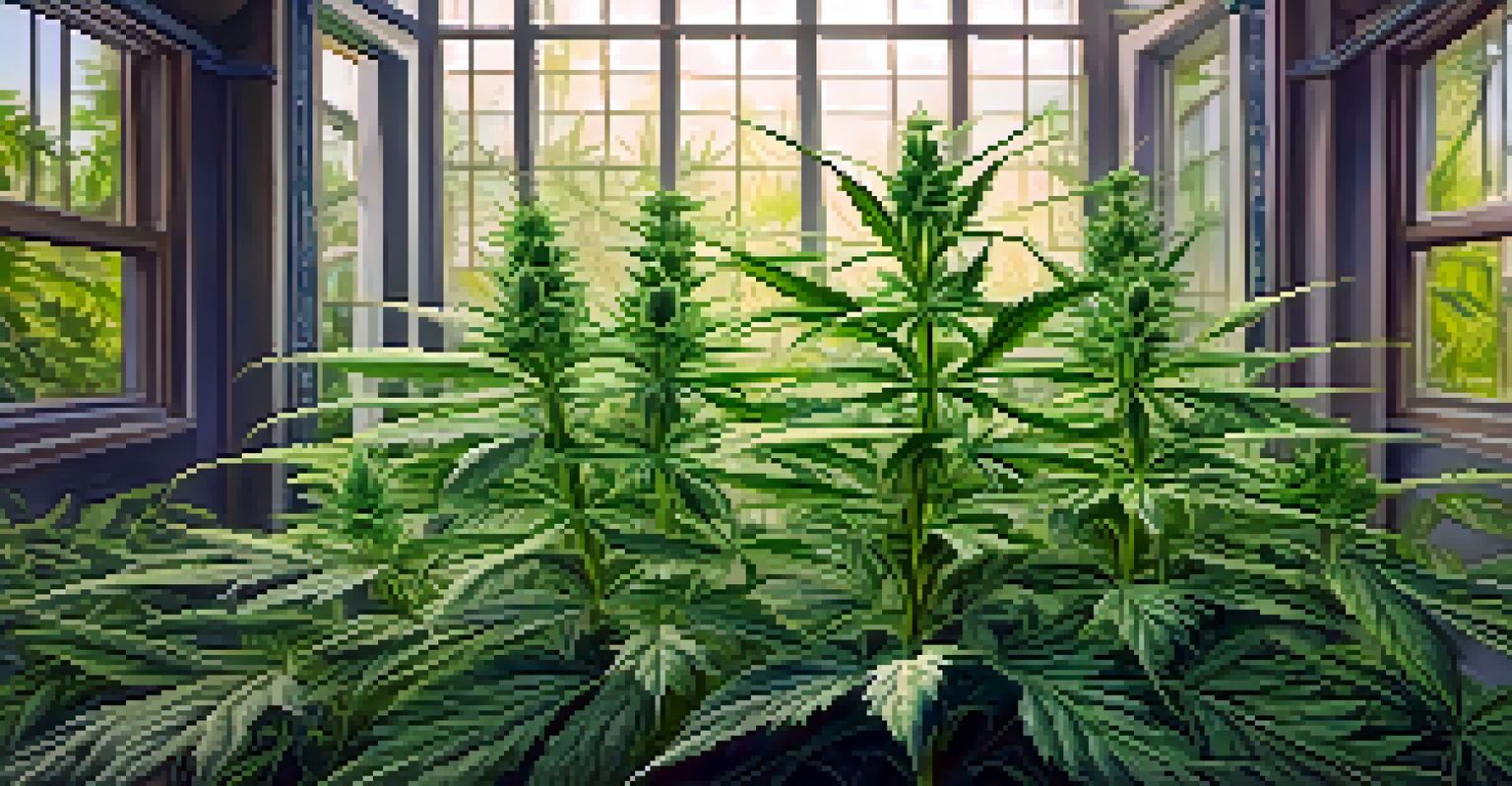Cultural Barriers to Medical Marijuana Usage in Minorities

Understanding Medical Marijuana and Its Benefits
Medical marijuana, derived from the cannabis plant, is utilized to alleviate various health issues such as chronic pain, anxiety, and epilepsy. Its legalization has opened doors for many patients seeking alternative treatments. However, understanding its benefits is often clouded by stigma and misinformation in minority communities.
The greatest weapon against stress is our ability to choose one thought over another.
For instance, while some might recognize its potential to replace opioids for pain management, fears stemming from historical injustices surrounding drug use can overshadow these advantages. This hesitance can prevent individuals from considering a potentially life-changing option for their health.
Moreover, the lack of accessible information about medical marijuana's benefits can exacerbate the divide. When communities are not adequately informed, misconceptions flourish, leading to resistance against exploring this treatment avenue.
Historical Context: Drug Policy and Minority Communities
The history of drug policy in the United States has disproportionately affected minority communities, creating a legacy of distrust towards government-sanctioned substances. Policies that were once aimed at controlling drug use often targeted these groups, leading to skepticism about the motives behind legalization.

For example, the War on Drugs in the 1980s disproportionately impacted African American and Hispanic communities, resulting in a lasting fear of law enforcement and legal repercussions. This historical context can make individuals wary of embracing medical marijuana, even when it is legally available.
Cultural Stigma Hinders Acceptance
Deep-rooted beliefs about cannabis use create barriers in minority communities, preventing individuals from seeking medical marijuana despite its benefits.
Thus, the cultural perception shaped by these policies can create barriers that hinder the acceptance of medical marijuana as a legitimate treatment. Many still associate cannabis with criminality rather than its medicinal potential, which complicates discussions within these communities.
Cultural Stigma Surrounding Cannabis Use
In many minority cultures, there exists a significant stigma associated with any form of cannabis use, even when it's for medical purposes. This stigma often stems from deeply ingrained beliefs about drug use and its implications for personal and familial reputation.
Education is the most powerful weapon which you can use to change the world.
For instance, individuals may fear that using medical marijuana could label them as 'users' or 'addicts,' despite its legal and medicinal status. This fear can lead to internal conflict, where the need for relief from ailments clashes with cultural values and societal perceptions.
As a result, many might choose to suffer in silence rather than seek out medical marijuana, reinforcing cycles of pain and discomfort. The challenge lies in changing these perceptions to help individuals realize that seeking treatment is a sign of strength, not weakness.
Religious Beliefs and Marijuana Usage
Religious beliefs play a significant role in shaping attitudes towards drug use, including medical marijuana. In certain faiths, any form of substance use may be viewed as morally questionable, leading to reluctance in considering cannabis for therapeutic purposes.
For example, some individuals may adhere to teachings that promote abstinence from all substances, viewing medical marijuana as contradictory to their beliefs. This can create a complex dilemma for those who might benefit from its use but feel torn between personal health and spiritual convictions.
Economic Barriers Limit Access
High costs associated with obtaining medical marijuana and limited dispensaries can restrict access for lower-income families, even when they recognize its potential benefits.
Thus, addressing these concerns is essential in fostering a more open dialogue about medical marijuana's benefits, ensuring that spirituality and health can coexist harmoniously within these communities.
Lack of Representation in Medical Communities
A lack of representation in the medical community can exacerbate cultural barriers to medical marijuana usage. Minority patients often feel more comfortable discussing health issues with providers who understand their cultural backgrounds and experiences.
When healthcare professionals lack diversity, it can lead to miscommunication or misunderstandings, particularly regarding alternative treatments like medical marijuana. Patients may hesitate to bring up cannabis use with providers who may not be familiar with its benefits or who may hold biases against it.
Increasing diversity within the healthcare workforce is crucial in fostering trust and enhancing communication. When patients see themselves represented, they may feel more empowered to explore medical marijuana as a treatment option.
Accessibility and Economic Barriers
Even when individuals in minority communities are open to medical marijuana, economic barriers can hinder access. The cost of obtaining a medical marijuana card, coupled with the price of the product itself, can be prohibitively high for many.
For example, lower-income families may prioritize essential expenses like food and housing over medical treatments, even if those treatments could significantly improve their quality of life. This financial strain can lead to a situation where individuals are aware of the benefits but unable to act on them.
Education Can Change Perceptions
Awareness campaigns and community education initiatives are essential for dismantling misconceptions and promoting acceptance of medical marijuana as a legitimate treatment option.
Furthermore, limited dispensaries in certain areas can create additional challenges, making it difficult for those who may benefit from medical marijuana to access it. Addressing these economic disparities is essential to ensuring equitable access to all healthcare options.
Education and Awareness: Bridging the Gap
Education and awareness campaigns are vital in dismantling cultural barriers to medical marijuana usage in minority communities. By providing accurate information and addressing common misconceptions, these initiatives can empower individuals to make informed decisions about their health.
For instance, community workshops that include testimonials from individuals who have benefited from medical marijuana can help reduce stigma and encourage open conversations. These personal stories can resonate deeply and provide relatable context to those who may be skeptical.

Moreover, partnerships with local leaders and organizations can enhance outreach efforts. Engaging trusted figures within communities fosters a sense of credibility and can pave the way for broader acceptance of medical marijuana as a legitimate treatment option.